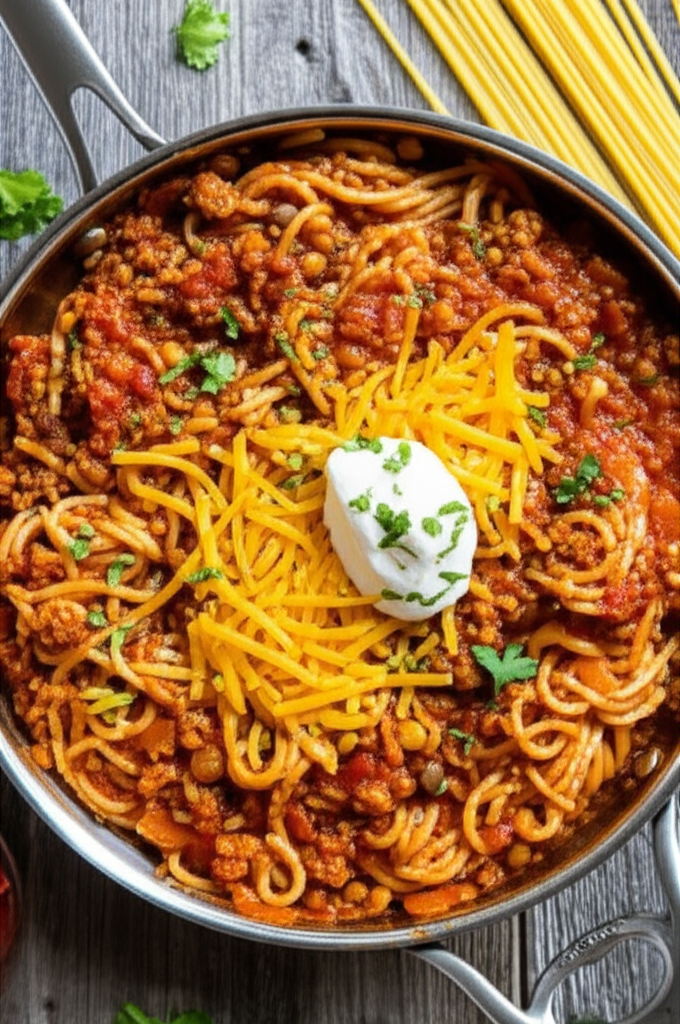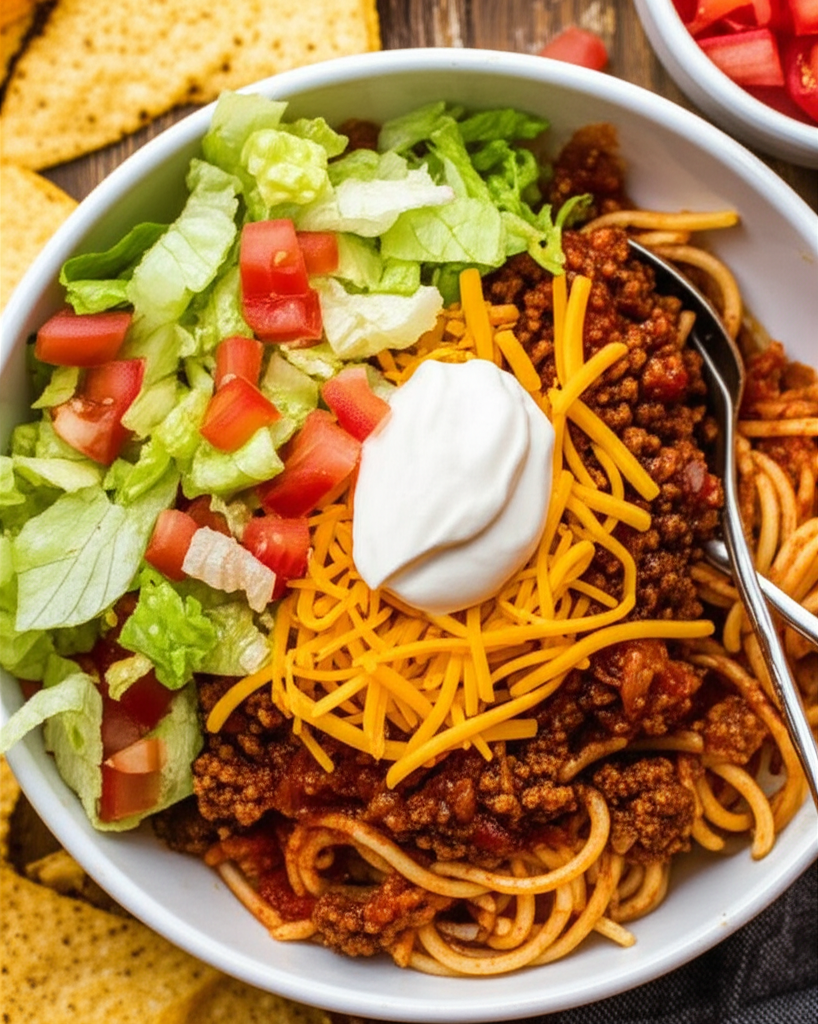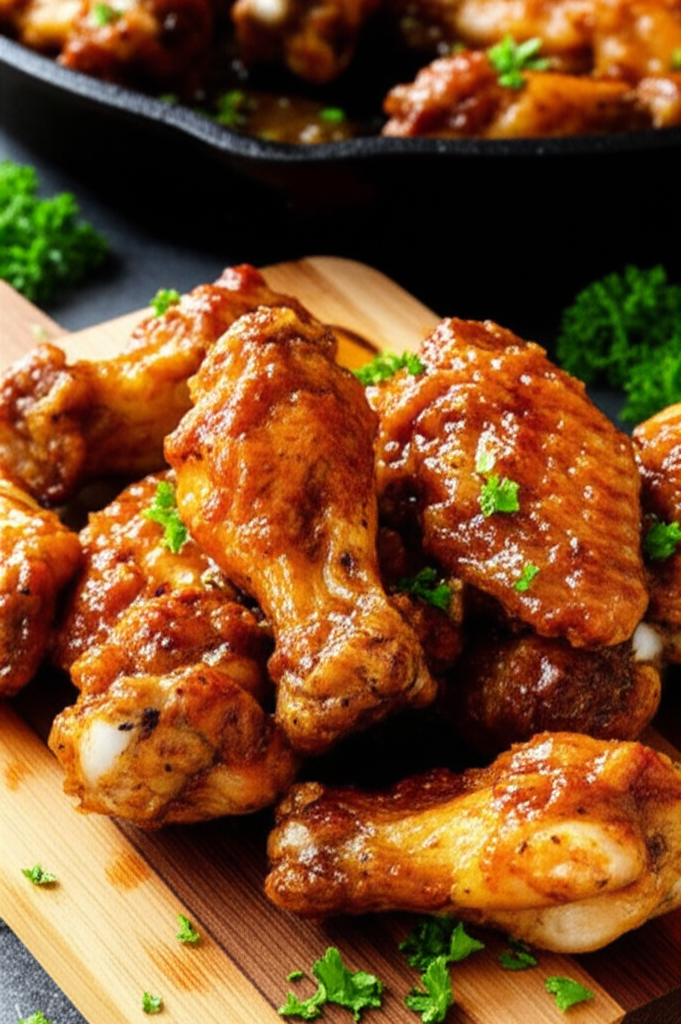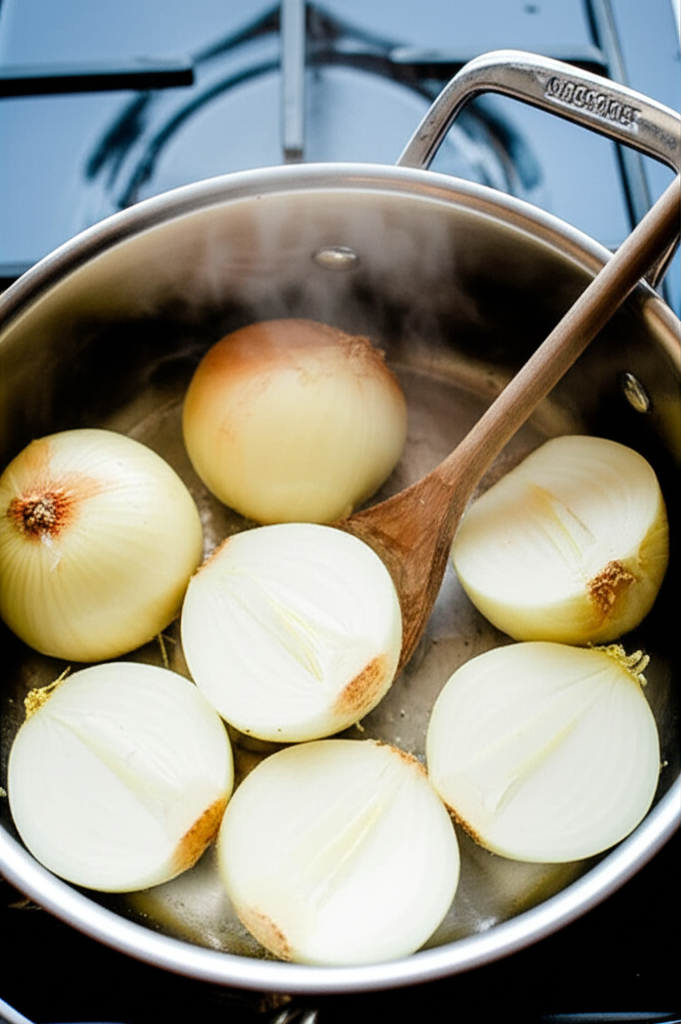taco spaghetti recipe
Taco Spaghetti Recipe Guide
Quick Answer

Taco spaghetti is a fun, family-friendly dish combining the flavors of tacos with the ease of spaghetti. This simple recipe typically involves browning ground beef (1 pound feeds 4-6 people), simmering it with taco seasoning, and then tossing it with cooked spaghetti. You can customize your taco spaghetti with various toppings like shredded cheese, diced tomatoes, and sour cream. It’s a quick weeknight meal, ready in under 30 minutes.
Making Delicious Taco Spaghetti
Taco spaghetti offers a comforting and flavorful meal, perfect for busy weeknights or casual get-togethers. Combining the familiar appeal of spaghetti with the zesty flavors of tacos, it’s a crowd-pleaser, especially for kids. This dish provides a hearty base, making it adaptable to your preferred level of spice and toppings.
Taco Spaghetti: A Flavor Fusion
Think of taco spaghetti as a blank canvas for your culinary creativity. It’s more than just ground beef and pasta; it’s about layering flavors and textures to create a truly satisfying meal. From mild to fiery, there’s a taco spaghetti variation for every palate.
Ingredients for Taco Spaghetti Success
Choosing high-quality ingredients elevates your taco spaghetti from simple to spectacular. Lean ground beef (80/20 blend) offers a good balance of flavor and leanness. Opt for a reputable brand of taco seasoning or create your own for a personalized taste. Quality pasta, whether regular or gluten-free, holds its shape well and absorbs the flavorful sauce.
Step-by-Step Guide to Taco Spaghetti Perfection
1. Brown the Beef: In a large skillet over medium-high heat, brown 1 pound of ground beef. Drain excess grease.
2. Spice It Up: Add 1 packet (or about 2 tablespoons) of taco seasoning to the browned beef. Stir well to coat the meat evenly.
3. Simmer to Perfection: Pour in 1 cup of water and bring the mixture to a simmer. Reduce the heat to low and cook for 10-12 minutes, or until the sauce has thickened.
4. Pasta Power: While the sauce simmers, cook 1 pound of spaghetti according to package directions until al dente. Drain the pasta and set aside.
5. Combine and Conquer: Add the cooked spaghetti to the skillet with the taco-seasoned beef. Toss to coat the pasta evenly with the sauce.
6. Topping Time: Serve immediately with your favorite taco toppings. Shredded cheddar cheese, diced tomatoes, sour cream, sliced black olives, and chopped green onions are popular choices.
Mastering the Art of Taco Spaghetti
Elevate your taco spaghetti with these insightful tips.
Pro Tips
Meat Matters: Experiment with different ground meats like turkey, chicken, or even plant-based crumbles (adjust cooking times accordingly). This changes the overall calorie and fat content significantly.
Spice Level Control: Adjust the amount of taco seasoning or add a pinch of cayenne pepper for extra heat, impacting flavor intensity.
Freshness Boost: Incorporate fresh ingredients like chopped cilantro, diced bell peppers, or a squeeze of lime juice. This adds another layer of flavor complexity.
Creamy Dreamy: Stir in a dollop of cream cheese or sour cream to the sauce for extra richness and creaminess. The consistency is affected, becoming smoother and richer.
Cheese Please: Explore different cheeses like Monterey Jack, pepper jack, or a Mexican blend. Each cheese offers unique melting properties and flavor profiles.
Common Pitfalls & Fixes
Bland Flavor: Add more taco seasoning, a splash of hot sauce, or a squeeze of lime juice.
Dry Spaghetti: Ensure the spaghetti is cooked al dente. Toss the cooked pasta with a little olive oil before adding it to the sauce.
Watery Sauce: Simmer the sauce uncovered for a longer time to allow excess liquid to evaporate.
Burnt Beef: Reduce the heat and use a non-stick skillet to prevent burning. Make sure to stir the beef frequently while browning.
Taco Spaghetti Variations
| Option | Key Attribute(s) | Best For | Caveat |
|—|—|—|—|
| Vegetarian Taco Spaghetti | Uses black beans, corn, and lentils instead of ground beef | Vegetarian/Vegan diets | May require additional spices for depth of flavor |
| Cheesy Taco Spaghetti Casserole | Bakes the taco spaghetti with an extra layer of cheese | Potlucks and large gatherings | Takes longer to prepare |
| One-Pot Taco Spaghetti | Cooks the spaghetti in the same pot as the sauce | Quick and easy weeknight meals | Requires precise timing to ensure the pasta cooks properly |
Taco Spaghetti FAQs
1. Can I use homemade taco seasoning? Absolutely! Homemade taco seasoning allows you to control the ingredients and tailor the flavor to your preference.
2. Is taco spaghetti a healthy meal? While taco spaghetti can be part of a balanced diet, it’s relatively high in carbohydrates and sodium. Opt for lean ground meat, whole wheat pasta, and load up on fresh vegetables to boost the nutritional value.
3. What are some alternative toppings for taco spaghetti? Guacamole, salsa, jalapeños, shredded lettuce, and pickled onions are great alternatives, offering different textures and flavors.
4. Can I make taco spaghetti ahead of time? Yes, you can prepare the sauce and the pasta separately and combine them just before serving. Reheat gently to avoid overcooking the pasta.
5. How do I store leftover taco spaghetti? Store leftovers in an airtight container in the refrigerator for up to 3-4 days. Reheat in the microwave or on the stovetop.
6. Can I freeze taco spaghetti? While it’s possible to freeze taco spaghetti, the pasta may become mushy upon thawing. It’s best enjoyed fresh or within a few days of preparation.
7. What is the difference between taco spaghetti and regular spaghetti with meat sauce? Taco spaghetti uses taco seasoning, giving it a distinctively different flavor profile from traditional spaghetti with meat sauce.
Key Takeaways
Taco spaghetti is a versatile and customizable dish that easily adapts to various dietary needs and preferences.
Fresh ingredients and quality spices enhance the flavor of the dish.
Properly browning the meat and simmering the sauce are key steps to achieving optimal flavor and texture.
A variety of toppings allows for a personalized dining experience.
Understanding common pitfalls and their solutions will help you create perfect taco spaghetti every time.






